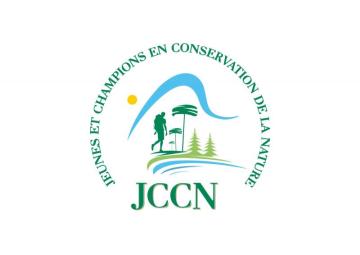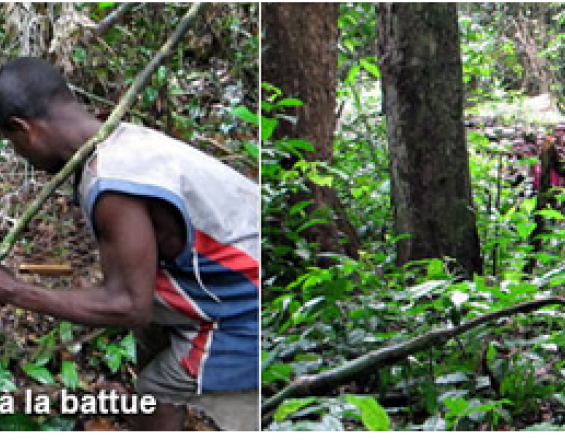
Biodiversity conservation by indigenous peoples in APAC Bembiteli

Bembiteli is an indigenous and community heritage area (APAC) located in the Tshopo province, precisely in the Bafwasende territory. It covers an estimated total area of 47,550 ha, and comprises two groups (Bemili and Bembiteli) spread over the villages of Bavakei, Babiloto, Bayakoko, Bavanangala, Bavasele and Bavangboko. Located in the heart of the Congo Basin, the way of life led by the indigenous peoples occupying the area contributes to the preservation of the habitats of several species of wildlife. APAC Bembiteli is one of 25 emblematic indigenous territories in the Democratic Republic of Congo, where people live in perfect harmony with nature, preserving their cultural and spiritual ties. A number of indigenous Pygmy families use traditional natural resource practices, such as gathering and hunting, to ensure their survival.
Context
Challenges addressed
The promotion of the Bembiteli APAC, like any other APAC, has a positive impact on preserving the cultural and spiritual values of indigenous peoples and securing their living territories, which are facing attempts to expand mining sites. It should be noted that the loss of indigenous peoples' traditional knowledge may lead to a tendency in future generations to adopt new behaviours that are not conducive to the conservation and sustainable use of natural resources.
Location
Process
Summary of the process
As an indigenous heritage area, Bembiteli APAC enjoys a form of governance by indigenous peoples, based on the application of custom and traditional practices. There is therefore no modern governance and management tool for the site. Rights related to site management, and in particular access to natural resources, are not documented in a written text, but are defined customarily, authorizing community members to access resources in the traditional way. Conflicts, when they arise, are resolved peacefully at the Barza, and customary sanctions are applied only when necessary, in situations of repeated violation of the rules established by the customary authorities.
Building Blocks
Traditional resource management by aboriginal communities
As a territory inhabited by indigenous peoples, land and natural resources are managed in the traditional way.
Enabling factors
The success of this management method is linked to the application of traditional rules for the use of natural resources, whose positive impact on biodiversity conservation has been recognized since the dawn of time.
Lesson learned
It is well known that Aboriginal and Community Heritage Areas are areas that contribute to maintaining the ecological integrity of ecosystems and conserving Biodiversity.
Use of traditional and customary rules in resource management
Communities use traditional and customary rules as mechanisms for accessing natural resources and sharing the benefits arising from their use.
Enabling factors
All members of the community have access to the resources, and any disputes are settled by traditional or customary means.
Lesson learned
The use of traditional rules ensures sustainable management of natural resources.
Impacts
In terms of social impact, APAC Bembiteli is one of 25 indigenous territories identified in the Democratic Republic of Congo, where people live in perfect harmony with nature, preserving their cultural and spiritual ties. A number of indigenous Pygmy families use traditional natural resource practices, such as gathering and hunting, to ensure their survival. Mechanisms for promoting cultural and spiritual values include the organization of traditional rituals, circumcision of young people, and traditional dances and songs. The indigenous community of Bembiteli also has various food prohibitions that contribute to the conservation of in situ biodiversity. In terms of the intangible value or spiritual attributes of nature, we can cite the case of waterfalls of cultural importance for connecting with the spirits of ancestors.
Beneficiaries
Beneficiaries include the indigenous community, technical and financial partners, researchers, members of civil society and environmental activists.
Sustainable Development Goals
Story
APAC Bembiteli is located in the Tshopo province, precisely in the Bafwasende territory. It covers an estimated total area of 47,550 ha, and comprises two groups (Bemili and Bembiteli) spread over the villages of Bavakei, Babiloto, Bayakoko, Bavanangala, Bavasele and Bavangboko. Located in the heart of the Congo Basin, the way of life led by the indigenous peoples occupying the area contributes to the preservation of the habitats of several species of wildlife. APAC Bembiteli is one of 25 emblematic indigenous territories in the Democratic Republic of Congo, where people live in perfect harmony with nature, preserving their cultural and spiritual ties. Many families of the indigenous Pygmy peoples use traditional practices such as gathering and hunting to ensure their survival.
Consisting of large tracts of dense rainforest, the Bembiteli area is home to significant plant diversity and still retains good wildlife diversity. The Bembiteli area still preserves individuals of Okapi, giant pangolin, etc., species listed among the protected and endangered categories (source: ANAPAC-RDC report). The area is home to large tree species such as Gilbertiodendron dewevrei, Pancovia harmsiana, Cynometra alexandri, Canarium schweinfurthii, Petersianthus macrocarpus, Cynometra cauliflora, Diospyros alboflaveskens, Ricinodendron heudelotii, Olax gambecola, Celtis zenkeri, etc. In terms of ecosystem services, Bembiteli's forests fully play their role in regulating the climate and providing livelihoods for the community living there. Non-timber forest products are mainly the wild Nfumbwa vegetable(Gnetum africanum), Marantaceae leaves used as packaging, wild food and medicinal plants, etc. Hunting and fishing are carried out in the Bembiteli forests. Hunting and fishing are carried out in the traditional way and in strict compliance with traditional rules. The forest is the main source of essential goods and services such as food, drinking water, fibers, fuel, pharmaceutical products, etc.




